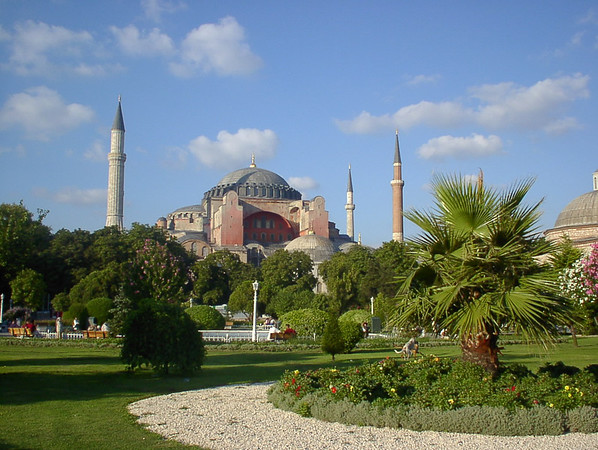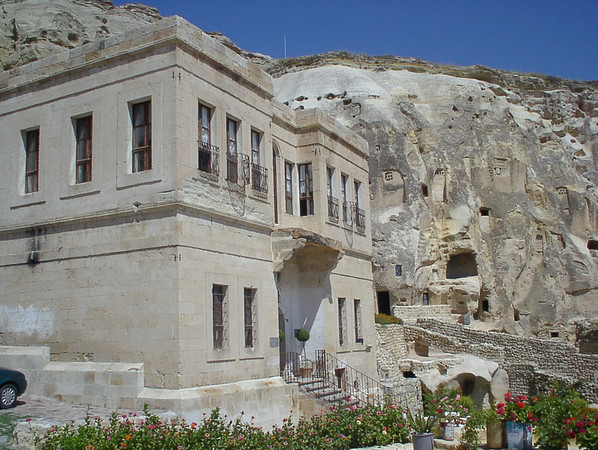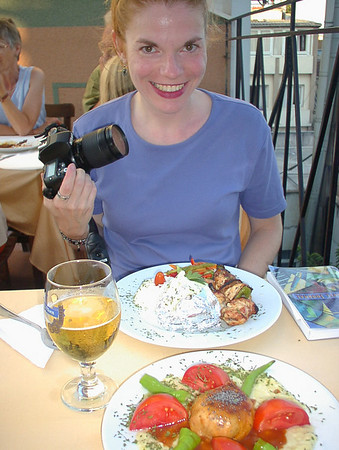My interest in Turkey began, oddly enough, on a trek through Wales. While staying in Chepstow, at the First Hurdle Bed and Breakfast, I spent hours chatting with proprietors and world travelers Yvonne and Bob Westwood. Yvonne’s tales and photos of Turkey’s white-clad, whirling dervishes, mosaic-filled mosques and spiraling minarets left me wide-eyed and breathless. Photo books and essays about the Eurasian country further fueled my fascination with this exotic land.
Forget Tintern Abbey, Snowdon and Cardigan Bay. I wanted to head home and start planning my own journey to Turkey.

Since that fateful stay in Chepstow, I’ve made two trips to Turkey. In spite of its refusal to own up to the Armenian genocide and its periodically feudal attitudes toward women, I remain as enthralled as I was a decade ago on that rainy afternoon in Wales.
What initially captivated me were the breathtaking sites. Istanbul’s chaotic Grand Bazaar, Topkapi Palace, Blue Mosque and Hagia Sofia. The eerie, chimney-topped landscape of Cappadocia. The terraced, outdoor mineral pools and chalk white stalactites of Pamukkale. The mountainside Lycian sarcophogi or “rock tombs” and underwater city near Fethiye. The chimera — or flaming earth — of Olympos. Gallipoli. Antalya. Ankara. Amazing places that heretofore I had only encountered in books I now experienced firsthand.

Driving through the scorching countryside in dodgy rental cars, I also fell in love with the people of Turkey and all the wonderful foods that they made. The ubiquitous sweet tea, served by every carpet wallah and cafe owner. The strong, grounds-studded Turk kahvesi or Turkish coffee. Street food such as sesame bread rings or simits, kebabs and gozleme, a filled filo pastry.
Some dishes reminded me of foods served in other parts of the Mediterranean. Dolmades, or rice-stuffed vine leaves, the cucumber-mint-yogurt dip cacik and lamb-filled moussaka called to mind Greek specialties. Hummus popped up on every Middle Eastern or Mediterranean menu. Traditional spices and techniques were what made these dishes decidedly Turkish.

Turkish Eggplant Pilaf with Green Peppersa/k/a Patlicanli Pilav
Courtesy of Amberin Zaman, Turkish correspondent for The Economist
Serves 8 to 10 as a side dish
Ingredients:
2 eggplants, washed and with strips of the skin removed lengthwise
2 green peppers, cut into small pieces
5 tablespoons olive oil
1 teaspoon cinnamon
1 tablespoon brown sugar
1 teaspoon salt
1 teaspoon black pepper
1 ½ cups long grain rice
3 cups water
Using a vegetable peeler, remove lengthwise strips of the eggplant’s skin so that the vegetable appears to have stripes stretching from tip to tip. Cut the eggplant into small chunks and place the pieces onto a cooling rack or stack of paper towels. Sprinkle salt over the cut eggplant and allow the pieces to drain for 15 to 30 minutes.
Heat the olive oil in a Dutch oven or large sauté pan. Add the eggplant and pepper to the pan and sauté until tender but not overly soft or mushy.
Add the sugar, cinnamon, salt and pepper. Stir the ingredients together then cook for 1 minute.
Add the rice and stir to coat with the oil and spices.
Add the water and bring to a boil.
Reduce the heat to a simmer then cover the pan and cook until almost all the liquid has been absorbed, 15 to 20 minutes.
Remove the pan from the heat. Take off the lid and put a clean dish towel over the pot. Clamp the lid back on and let the pilaf sit for approximately 20 minutes. The cloth will absorb the excess moisture and make the rice fluffier.
Remove the lid and the dish towel and fluff the pilaf with a fork. Allow the pilaf to cool to room temperature and either place in bowl or leave in the pan and refrigerate until ready to serve.
Turkish Coffee
Serves 4
In Turkey coffee is brewed using a cevze, a small, wide-bottomed, pitcher-shaped vessel with a long handle. Although specialty coffee and cookware shops do sell cevzes or ibriks, the Greek word for the Turkish pot, a very small saucepan will suffice.
Ingredients:
4 heaping teaspoons finely ground coffee
1 cup cold water
Combine the ground coffee and water in a small saucepan and stir until well mixed.
Place the saucepan on low heat and allow the ingredients to simmer for roughly 3 minutes until the mixture starts to rise. During this time do not stir the ingredients.
Once the liquid starts to rise and foam, remove the saucepan from the burner. Do not allow the coffee to overflow.
After a 10 to 20 second resting period return the saucepan to the burner and leave on low heat until the coffee begins to rise again. Remove from heat. Repeat these steps for a third time.
After the third rising remove the saucepan from the heat and pour the coffee into 4 demitasse cups. As the grounds will also be present in the cup, allow them to settle before consuming.